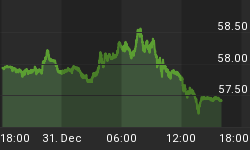When central bankers dedicate their existence to re-inflating asset bubbles, it shouldn't at all be a surprise to investors that they eventually achieve success. Ben Bernanke has aggressively attempted to prop up the real estate and equity markets since 2008. His efforts to increase the broader money supply and create inflation have finally supported home prices, sent the Dow Jones Industrial average to a record nominal high and propelled the bond bubble to dizzying heights.
The price of any commodity is highly influential towards its consumption. This concept is no different when applied to money and its borrowing costs. Therefore, one of the most important factors in determining money supply growth is the level of interest rates. The Federal Reserve artificially pushed the cost of money down to 1% during the time frame of June 2003 thru June 2004. It is vitally important to note that these low interest rates were not due to a savings glut; but were rather created by central bank purchases of assets. This low cost of borrowed funds affected consumers' behavior towards debt and was the primary reason for the massive real estate bubble.
Today, the Fed Funds rate has been pushed even lower than it was in the early 2000's. In addition, unlike a decade ago when the Fed held the overnight lending rate at 1% for "just" one year, the central bank is in the process of pegging short-term rates at near zero percent for what will amount to be at least seven years. However, this time the primary borrower of the central bank's cheap money isn't consumers as much as it is the Federal government. Mr. Bernanke has already increased the monetary base by over $2 trillion since the Great Recession began in late 2007, which has helped cause the M2 money supply to grow by $3 trillion--an increase of 40%!
Therefore, it isn't such a mystery as to why there are now partying down on Wall Street like it is 1999; and we are once again amused with anecdotes of real estate buyers making millions flipping homes.
But all this money printing has not, nor will it ever, restore the economy to long-term prosperity. Despite the Fed's efforts to spur the economy, GDP growth increased just 1.5% during all of 2012 and grew at an annual rate of just 0.1% during Q4 of last year. The future doesn't bode much better. This year consumers have to deal with higher taxes, rising interest rates and record high gas prices for March. Don't look for exports to rescue the economy either. Eurozone PMIs are firmly in contraction territory and Communist China is busy dictating the growth rate of the economy by building more empty cities--clearly an unsustainable and dangerous economic plan.
This means that the Federal Reserve will keep interest rates at record lows for significantly longer than the time it took to construct any of its previous bubbles. Also, the central bank will take years to reduce its $85 billion per month pace of monetary base expansion back to neutrality. Meanwhile, surging money growth will continue to force more air into the stock, real estate and bond markets for several years to come.
The ramifications for investors and the economy will be profound. Not only will the economy move gradually toward a pronounced condition of stagflation, but, more importantly, the bubbles being created by the Fed will be far greater and more devastating than any other in history. Equity and real estate prices are already stretched far beyond what their underlying fundamentals can support. But they are nothing compared with the distorted valuations being applied to U.S. sovereign debt. The bursting of the bond bubble will be exponential worse than the deflation brought on by the NASDAQ and real estate debacles. It is sad to conclude that the middle class is set up to get slaughtered even worse than they did when the previous two bubbles burst.
The economy is heading for unprecedented volatility between rampant inflation and deflation courtesy of Ben Bernanke's sponsorship of the $7 trillion increase in new Federal debt since 2008. Investors need to plan now while they still have time before the economic chaos begins.
















